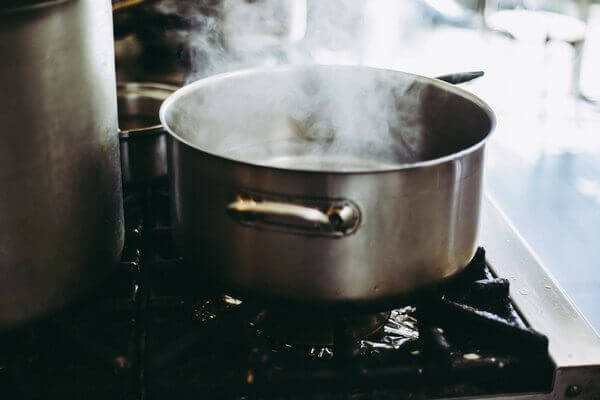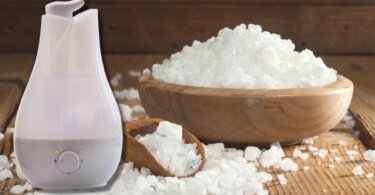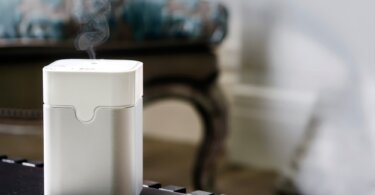
Often, humid air and all the mildew it brings with itself is a nightmare for people. But what’s equally troublesome is dry air that messes with your health and makes you uncomfortable.
Now, this problem is easily resolved with the help of humidifiers. But not everyone can afford one, and some people don’t approve of them. This is why we’ve listed down some DIY humidifier solutions below. So if that’s what you plan to do, read on!
Why Do You Need to Humidify the Air in the House
Dry air can negatively impact our well-being, especially during winters, which is why it’s important to maintain humidity levels indoors. Here’s why you need to do so:
- Affects your respiratory system: Dry air can dry out the mucous in our nasal passages, which traps dust particles and allergens. Here’s where all the respiratory issues begin and end up in flu, cough, allergic reactions, and even asthma attacks.
- Dries out skin: Air that’s low in humidity sucks out the moisture from your skin, causing itching and flakiness. It also makes your lips dry, making them more prone to catching viral infections like cold sores.
- Dries out the eyes: Like your skin, your eyes also dry out due to low humidity, leaving them irritated, red, and susceptible to infections.
- Affects infrastructure: Not many people know this, but a dry environment causes wood floorings and window/door frames to warp. And if you’ve ever noticed your wallpaper or paint peeling or cracking, the culprit is probably dry air.
Hence, dry air can adversely affect you and your home, but so can high humidity. The solution? Maintain the optimum indoor humidity level, which lies between 30% to 50%. Anything more or less than this range will make the environment uncomfortable for you to live in.
Recommend: What Humidity Should Your Basement Be
How to Check Your Home’s Humidity
Determining humidity is easy. While some of these methods aren’t entirely accurate, they can still give you an idea of the humidity level indoors:
- Purchase a hygrometer: This device accurately measures the amount of water vapor present in the air. It’s available in analog and digital forms at an affordable price in drugstores.
- Use ice cubes: Drop some ice cubes into an empty glass and leave it in your living room for 5 minutes. If the glass has moisture dripping down from its sides, your house is too humid. But if there are no drips, then the chances are, you’re surrounded by air that’s too dry.
- Wet and dry bulb thermometer: This trick involves two glass thermometers. Tie a wet piece of cloth or cotton ball around the bulb of one thermometer and leave the other thermometer as it is. Lay them in your living room or bedroom and check their temperatures after 5-10 minutes. Next, subtract the temperature of the wet thermometer from the other one – this number is the relative humidity inside your house.
- Signs and symptoms: If you’re not up for those tasks, you can still determine the humidity by observing your surroundings. Signs and symptoms like dry skin and lips, cough, allergies, and static electricity means it’s too dry inside your house. Meanwhile, moisture on glass surfaces such as windows and signs of mold and wet stains on walls indicates high humidity.
Read about Honeywell T6 Pro Thermostat
How to Make Your Own Homemade Humidifier Naturally
A humidifier adds moisture to your surroundings and is essential in dry and cold climates. However, you don’t always have to buy one. You can, instead, make inexpensive DIY humidifiers – it’s not that hard to humidify a room without a humidifier!
1. Indoor Plants
For this DIY solution, you don’t even have to do anything, except buying a bunch of indoor plants.
Plants need water to survive, but they don’t use up all the water they take in. Hence, their leaves and flowers release the extra water, which gets evaporated, increasing the moisture level in the air naturally.
2. Water Vases
Another decorative option is to put up water vases on your furniture. This DIY humidifier can be further improved by dropping in some aquatic plants such as the Chinese Evergreen, Lucky Bamboo, or Spider plants.
Plants and flowers won’t only add to the aesthetics of your home but also help humidify the surrounding air along with the water vase.
3. Mop the Floor
When you feel the air around you is getting dry, get mopping. Making a large surface area such as the floor in your house wet will allow lots of water to evaporate into the atmosphere. In effect, it’ll increase the indoor relative humidity.
4. Laundry
A simple way to add lots of moisture to the air is to skip your laundry’s drying cycle. Instead, you can hang up your clothes on a line or rack inside your house. Next, turn on a fan nearby or open the windows, so as the clothes dry up, they increase humidity in the surrounding areas.
An alternative to this is kitchen and bath towels that you can hang to dry in the kitchen and bathrooms. Moreover, if you hand-wash your dishes, you can leave them to dry on their own instead of wiping them dry with dish towels.
5. Bowls of Water
Fill up some ceramic bowls to the top with water and place them in front of (non-electric) radiators inside your house. The heat from the radiator will cause the water to evaporate. Alternatively, you can place these bowls in front of windows or beneath ceiling fans.
Also, try using decorative bowls of water, and you’ve got yourself a decoration piece and DIY humidifier combo.
6. Shower and Bath
You wouldn’t want to leave your bathroom wet and humid in fear of mold growth in most cases. But for dry air, you can use this humidity to your advantage.
After you shower, leave your shower and bathroom door open and let in all that moist air inside your home. In case of a bath, leave the drain stopper in place and let evaporation do its work.
7. Fish Bowls and Tanks
If you’re interested in getting a fish as a pet, you’re in luck. A fish bowl or tank is an excellent way to increase humidity inside the house, as lots of water evaporates from their large surface areas.
Plus, not only will this help make the air moist, but you’ll also end up with a little fish friend!
8. Sponge and Water
A sponge can soak loads of water and hold on to it. Hence, it makes sense to use them to add moisture to your surroundings. Simply soak a sponge in a bowl of water and keep it in the driest room of the house. The sponge will slowly suck up the water from the bowl and release it into the air.
9. DIY Humidifier with Wick
Try simplifying the mechanism of an actual humidifier with this homemade humidifier. Firstly, add water to a deep bowl and place a clothes hanger on the bowl’s top. Next, place a dish towel over the hanger so that its ends are dipped into the water.
The towel will act as a wick and gradually suck up the water from the bowl and release it into the room.
10. Damp Curtains
One of the quickest ways to increase the relative humidity is to dampen your curtains. If you’re opening up windows, it’s a good idea to spray your curtains with a good amount of water. As the breeze comes in, your curtains will dry up and release water vapors into the air.
Just be sure not to make your curtains wet. This can increase the humidity above the optimum level and make the curtains susceptible to mold growth.
Final Words
Dry air is undoubtedly harmful to health, especially for babies and children who have asthma and other respiratory illnesses. Luckily, increasing the humidity inside your house isn’t hard with so many DIY tricks that you can do.
Just make sure you’re not overdoing it and making the environment too humid, as that comes with its own set of problems. Keep checking the humidity levels inside to ensure a healthy living environment.




